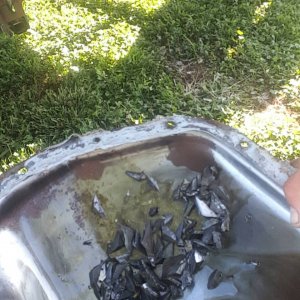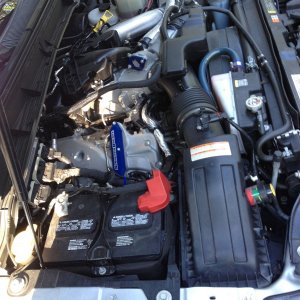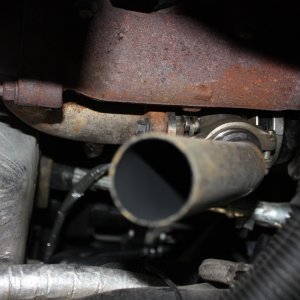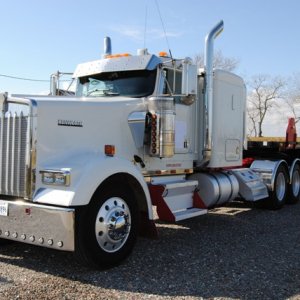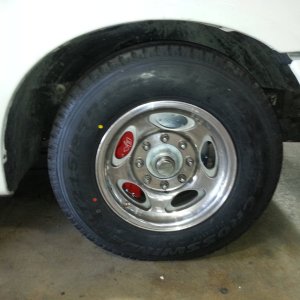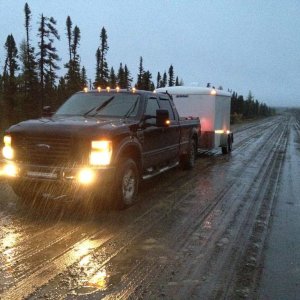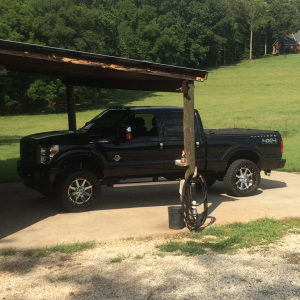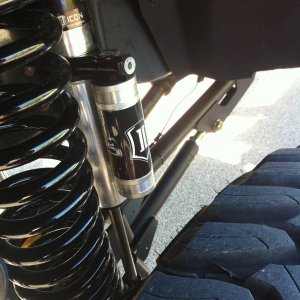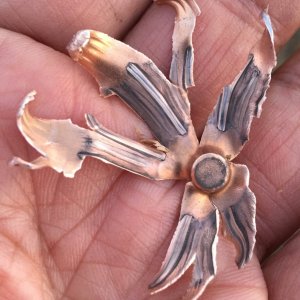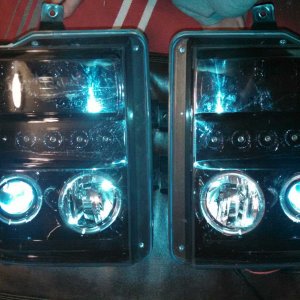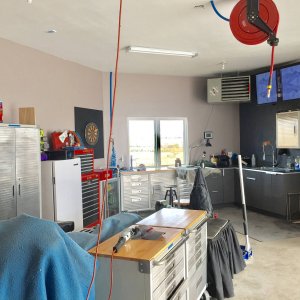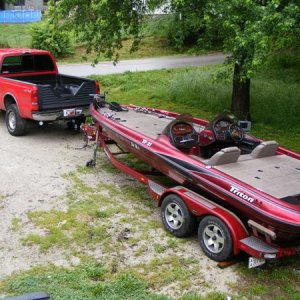Well....some info again that's compiled over the years.

oke:
quote:
“have a used AIS…couldn’t find a filter for it…got a FIPKI K&N system cheap…should I put a tymar on or put the AIS back on??? I was thinking of mounting a tymar to the K&N tube…what do you guys think”
The K&N element should probably be avoided in turbo-charged applications. The initial filtration efficiency is not high enough to protect the compressor impeller.
The phrase “mounting a tymar” sounds kind of like Tymar is a filter. The filter we use is a Donaldson B085011 and Tymar is a company name. Tymar Performance makes all sorts of items, one of them being the open element intake kits.
That said, the element we use would not fit on the end of a K&N FIPK system. I guess you could technically modify things to get it in, but you wouldn’t have minimal radial clearance around the filter, which should be considered very important to providing low restriction air to the turbo. Without supplying minimal radial clearance, you won’t get the positive benefits the open element system should create.
You may want to consider replacing the PVC with 4" OD metal tube once the fit is figured out. The ID of the PVC can compromise volume and we found that it made a difference with the stock turbo, so I am sure it would make a difference with the H2. The other complication we ran into using PVC or ABS was that the connections had an ugly habit of popping off. Didn't happen too often, but once is all it would take in the right conditions.
The AIS will provide excellent filtration efficiency, but will not improve overall restriction or allow much additional air flow in the configuration that Ford uses. The Tymar Intake will provide excellent filtration efficiency as well as decrease restriction to the turbo and add significant air flow.
quote:
“Tymar is going to give you better flow but AIS is going to give you unmatched filtration…the AIS plus it will last a LONG time, like 60K miles…”
Although the AIS will give better filtration efficiency, you are only talking about 1/10 of a percent over the filter Tymar Performance Intakes use at initial filtration efficiencies. Not enough of a difference to really differentiate between the two.
For the longevity, you have to start talking about restriction ranges in both stock and aftermarket applications and how dirt will affect them. AIS has a larger capacity, but not across the restriction ranges once installed on the truck. Because of the configuration you are not lowering restriction significant over stock levels, but you are receiving better filtration compared to the stock intake.
The Tymar Intake will allow lower restriction levels and lasts approximately 15K miles in a restriction range LOWER than stock. If you want to go with longevity of filter, you can continue using the same filter and will simply not experience the positive benefits of lower than stock restriction levels.
We supplied the intake systems for Granite Construction and used them as a severe duty use test. They were rebuilding Power Stroke engines at approximately 60K miles because of the fine silt in the mining beds. After changing to our system they were using the same filters with 28K mile change out intervals and only experiencing 32”h2o of restriction (yellow on your stock restriction gauges) and they eliminated the necessity of engine rebuilds and were selling the used trucks with over 180K miles on them.
quote:
“I'm using a tymar because it's cheap to setup and offers good filtration.”
Although I agree with you, your listed intake is a DIY 6637, which is neither a Tymar nor a recommended system by us. The WIX/NAPA 6637 is not a hydrophobic (water resistant) element and using it as an open element should be avoided. There are other concerns such as providing minimal radial clearance, isolating engine vibration, positioning away from rain drip channel, etc. But, I just wanted to draw a clear difference between copies, DIY efforts, and our product.
quote:
“…be sure your Tymar-type filter includes the PowerCore filter media and not some lesser media material.”
Although the PowerCore ® media is far superior to most other media, there is not a PowerCore media filter available for use as an open element. They are inserts for intake boxes and are not configure for use as filter alone applications.
The filter media is not the main attraction, but the filter configuration. It is NOT true that you cannot get the same filtration efficiencies or flow rates from other Donaldson products. It will just simply have to be larger. The PowerCore configuration allows for compact applications that have flow rates and filtration efficiencies of filters much larger. So it is the compactness of the element and not that the media processes some magical qualities.
quote:
“IMO, the FIPK tube with the heat shield and the Donaldson (aka #6637) filter combination is hard to beat for the money.”
I would probably respectfully disagree. The problem is the thickness of the stacked gauze media will not allow for a high pleat count and severely restricts the available surface area. A typical RD-1460 that is used in a FIPK system only has about 44 pleats. The Donaldson we use is not only a larger filter overall, but the thinner media allows for 202 pleats, leaving us over 5 times the surface area to pull from. This is why we can outflow and out filter a re-usable element as long as minimum radial clearance is maintained.
The problem with heat shields and routing air through intake boxes is that whenever you direct air flow, you increase restriction. Low restriction is the goal, so using a filter that has the ability to flow large masses of air and then enclosing it in a box yields very poor results. Heat shields do literally nothing. Air flow under the hood is dynamic and not static. It is moving all the time. Hot air will move right around a heat shield at the same temperature and be ingested and the only thing you have caused is turbulence.
Aside from impeding minimal radial clearance and isolation of engine vibration, a serious cause for concern is placing the filter, especially a 6637 element, under a rain drip channel for the hood. Beyond the ambient moisture that will cause restriction as it is absorbed into the non-hydrophobic media, you will be directing water towards the filter anytime the rain drip channel flows more rain than it can hold or spills over the retainer during left turns.
I’ll try to check back in and address further comments in the days to come and can hopefully shed some light on why we do what we do using the configuration we did.
Peace to all, enjoy those rigs!
__________________
Hydroscopic means it absorbs water. Hydrophobic is water resistant. Easy to remember because "phobic" comes from phobia, meaning to be scared of or to repel.
Anyway, both of those filters are hydrophobic. The 085046 filter is for high humidity applications. This has little to do with the hydrophobic capabilities and deals with micro biotic growth since constant high humidity, think of boats that are always in the water moored to a dock, will have greater abilities for mold and such to develop on them.
It should be noted that the 085046 filter is a LOT more expensive and there is no air flow or hydrophobic benefit over the 085011.
Filter covers:
Total waste of money from a performance perspective. They do everything they are not supposed to do. They lower flow by causing additional restriction, have no surface area for high volume, and are unnecessary if you use the properly rated element for the application.
From a filtration view, they can increase filtration efficiency in applications where the filter used has very poor filtration efficiency (ie: reusable/cleanable elements, K&N, AFE, etc). However, they do it will a substantially smaller surface area that has basically no capacity to speak of. It will also measurably affect your flow rate negatively from the increase of the restriction, because you are, in affect, adding an additional layer of filtration with no surface area.
Think about these numbers:
Surface area of Donaldson I use on the Tymar Intake: 4,000 sq in
Surface area of a K&N conical style: 975 sq in
Surface area of a filter cover: 150 sq in
Donaldson has 4 times the surface compared to the K&N, which is significant in its own right, but 270 times the surface area compared to the filter cover, making a filter cover nothing but a hindrance. Filter covers originated from reusable elements inability to filter the air of a dusty environment. Using a proper filter with a proper filtration efficiency and you don't need to worry about it.
Same thing with the guys using them to protect an open element using an improper filter from experiencing water mist. If you use a proper filter for the application that uses a hydrophobic (water resistant) filter media you don't need additional layers adding restriction and lowering flow to gain protection. Again, use a proper filter you don't need to worry about it.
--

